Jason Sandford
Jason Sandford is a reporter, writer, blogger and photographer interested in all things Asheville.
Following the Asheville Area Arts Council’s Creative Sector Summit in April, Asheville artist Dawn Roe held an informal email discussion with colleagues and artists Bridget Conn and Ursula Gullow about art in Asheville to continue the conversation about the concept of “creative placemaking.” What follows is that exchange.
 Image Credit: Ben Stone/ From The Goethe Institut Document, The Role of Artists & The Arts in Creative Placemaking, 2014)
Image Credit: Ben Stone/ From The Goethe Institut Document, The Role of Artists & The Arts in Creative Placemaking, 2014)
Dawn Roe: There was a lot of somewhat general talk about the role that “arts and culture” play in “revitalizing” communities and/or adding an “artsy flair,” but little discussion around art itself in any kind of substantive manner – in terms of the role that challenging works or projects play in enriching quality of life via thoughtful engagement with ideas. Is art itself being purposefully displaced in these “creative placemaking” conversations and, if so, why?
Bridget Conn: I wouldn’t say that art is being purposefully displaced… I just think the people who are initiating “creative placemaking” projects are having to appeal to the widest audience possible, so therefore, what qualifies as an “art project” gets extremely watered down so it doesn’t offend anyone, so that it includes the absolute minimum components of what someone could call “art”. So art goes from creating visual or performative works that inspire dialogue and/or social change through their inherent subject matter to a project that paints dump trucks pretty colors. And the thing is, I don’t mind dump trucks being painted pretty colors at all, I actually prefer it to their usual drab look. But what bothers me is that such undertakings marginalize artists who are trying to do more than create a palatable visual experience. I say let creative placemaking do what it can to improve a city’s morale and economic viability, as it can clearly create positive change, but artists who are more conceptually-driven may need their own separate venture to have their goals recognized and valued.
Roe: I really love the distinction you’ve made between work that has a sole and/or primary purpose of creating a “palatable visual experience” versus conceptually driven work – how can we help audience/community members become more willing to engage and challenge themselves by spending time with works that go beyond the purely visual? And, if “Creative Placemaking” is going to end up being the civic designator for all art in the community, if we (as advocates for artworks that challenge audiences) don’t push for a place at the table, so to speak, won’t we remain marginalized?
Image Credit: The First World Congress of the Missing Things, Baltimore, June 7-8, 2014
Roe: Are we avoiding the difficult conversations around assigning (quantifiable) value to certain works/projects, and not others?
Conn: I don’t think the conversations are being actively avoided, I think it is just not on the radar of the people who are active in “creative placemaking” that other more challenging approaches to art exist. Or, if they know about such forms of art, they aren’t deemed as financially viable or as broadly appealing to warrant conversation. And those two descriptors could very well be true. But perhaps they could contribute culturally to a city in a way that isn’t easily economically quantifiable? Read: do we always have to teach to the correct answers in the multiple-choice test, can we value experiences that prioritize critical thinking and problem solving?
Roe: As you know, I strongly agree that there is great value in artwork and/or projects that cannot easily be mined for specific data sets that somehow quantify their monetary contribution to the community. And you may well be right that the messy and ambiguous questions of value are not on the radar of some involved in “creative placemaking.” But, isn’t it problematic that community leaders are potentially not thinking about the issues around assigning cultural value in relation to art, when it is these very leaders who are charged very directly with assigning capital value? How can one be determined without the other?
Ursula Gullow: I’m somewhat skeptical of the idea that art should be an impetus for economic growth in general. Public art projects, non-profits and creative placemaking [projects] should be regarded as long-term investments in the social fabric of a community rather than business opportunities for short-term economic growth. If the former were the case, perhaps we would see more challenging and provocative public work, like Mel Chin’s Spawn, Spore, Swing in Detroit, MI.
“A sustainable premise is essential. The new projects must move away from the expected temporary art installation and housing rehabilitation. Instead it must make a lasting contribution to the needs or the dreams of a neighborhood.” – Chin
Roe: And, from an artist/curator/educator perspective, what else was missing from the overall conversation?
Conn: As an artist, the issue was touched on, but no one talked in specific terms about how the city is going to attempt to retain the very people who give Asheville its “artistic flair” that is so appealing to tourist dollars. Those artists are all working multiple jobs that provide some of the lowest wages in the state, fending off skyrocketing residential and business rents. They are not-so-slowly getting pushed out of the city limits. Will Asheville follow suit of Providence RI, where Anne Gadwa Nicodemus talked about tax breaks existing for artists? What concrete measures can be taken by the city and county to secure affordable housing for those who contribute directly to Asheville’s country-wide fame, as many artists are entrepreneurs who are likely going to need years of establishing themselves before they can afford homeownership?
From an educator perspective, is there even room under the umbrella of “creative placemaking” for artworks that are primarily rooted in education and in challenging the viewer? Or does a whole other name need to be created for establishing value for works/experiences in a locale which aren’t bright, shiny, pretty, and/or instantly understandable by a mass audience? Can greater effort be put into art education to help broaden the audience for such works/experiences?
Also, as you pointed out, Dawn, who was it on the panel who didn’t even know the name of the artists who created the work over the Aloft parking garage? (Alex Irvine and Ian Wilkinson). It’s your point, but I think it summarizes everything nicely!
Image Credit: Colby Caldwell /Asheville Art Theory Reading Group
Roe: Really important questions, Bridget. I know there was a recent County Commissioner’s meeting, for instance, where apparently an initiative to support public art projects in relation to the new courthouse was passed ($25,000 for a history wall and $50,000 for a monument). I wonder if local artists and educators can push to have initiatives related to the question of the artist subsidies you mention above brought to the table? As well, I think I’d like to follow your lead and push for “greater effort to be put into art education to help broaden the audience” – and I wonder if, as a community, we can try to think about what that kind of education might look like, where it could take place, and how we could contribute (visiting artists at K-12 schools and/or corporate boardrooms, reading groups and panel discussions, etc.)? (Also, yes, it was the Mayor of Asheville who neglected to mention the Aloft public art project artists by name. Sad, and telling).
Gullow: I think its time for the hotels in Asheville to give larger tax revenue to the Asheville community. In his revelatory editorial, The 6 percent solution” [Mountain Xpress, Sept. 24, 2013] Roger Hartley writes: Asheville and Buncombe County lag behind their rivals in harnessing tourist dollars to improve residents’ lives.” He explains that “Buncombe’s 4 percent occupancy tax goes to the Tourism Development Authority to help attract more tourists, rather than supporting local services. If the law were changed, an additional 2 percent could go to the city, the county, the TDA or all three, helping keep more tourism revenues in the local economy.”
I do appreciate the good intentions of advocates for creative place-making, but I’m skeptical as to how artists actually benefit on the ground level. Too often artists give their time and services for free or very little payment. In fact, a crowd sourcing campaign was established to help artists Alex Irvine and Ian Wilkinson complete their mural on the Aloft hotel which I think is egregious. The hotel should be totally responsible for all the upkeep on it.
Image Credit: City of Chicago/ Anish Kapoor’s Cloud Gate
Roe: Related to so much of the above discussion, I feel the need to include a recent bit of anecdotal information. During discussions preceding the recently approved $50,000 allocation from the Buncombe County commissioners to fund a “monumental public art piece” in the courtyard of the new courthouse, David Gantt put up a slide to offer “some examples for monument, keeping it with the $50K price range” (This per Mountain Xpress staffer Haley Benton’s Twitter feed during the meeting). Included in this slide was an image of Anish Kapoor’s Cloud Gate – a project that apparently totaled approximately $23 MILLION by the time of its completion. Granted, I realize that Gantt was just “throwing ideas out there,” but this kind of disconnect seems very telling to me. I’m not sure it’s at all useful (or appropriate) to throw a 23-million dollar idea into a 50,000-dollar conversation.
Bridget Conn, Ursula Gullow and Dawn Roe are practicing artists, educators and community arts advocates.


























Re: “Arts Lover” June 5 / 8:03 pm
No one is suggesting that art SHOULD be any one thing or another. We’re simply advocating for a more thoughtful consideration of forms that may challenge preconceived notions of how art looks, feels and thinks. Simply asserting that we’d like to give those who engage with art in the community more opportunity to challenge themselves with idea-based works does NOT suggest that art should be “mostly conceptual.” As well, there is no discussion of any sort of movement away from technique or materials – these are primary components to any art form, but that doesn’t mean that every work that is crafted (or performed) must become a consumable object intended to be bought/sold. I’d like to direct you and others to the Center for Craft, Creativity & Design – an organization that is currently making huge inroads in the quest to link art and content in our community and beyond – very deliberately focusing on traditional craft methods alongside more contemporary modes of making and (gasp) thinking.
And, as to the dialogue you think we are having – I’m simply trying to re-state and elaborate upon our originally published conversation, because with each comment you make, it becomes more and more clear that you haven’t carefully read the column. This is why it’s so important for art to help serve as a stimulus for the production a community of critical thinkers – the more time we spend thoughtfully engaging with art, the more easily we’ll be able to bring creative and compassionate thinking into to our everyday lives, and the be better citizen you and I will become.
Side note: I’m not bothering to respond to your comments regarding the quoted passage from Ursula Gullow, as you’ve erroneously written that Gullow is speaking for the “umbrella organization” – which is simply wrong. Ursula Gullow works with The Media Arts Project (a simply Google search will give anyone that information).
You are correct, I mistook Ursula Gullow for the director of the Arts Council. Apologies to Kitty Love . . .and to Ursula Gullow.
Time for others to join this non-dialogue or for it to end.
Arts Lover,
Thank you for the apology and and I’m sure Kitty Love is grateful for the clarification as well.
As an artist/writer/teacher/organizer who has been involved with Asheville’s art scene for over a decade, I maintain that I am “skeptical of the idea that art should be an impetus for economic growth” because I find this to be a simplistic perspective, touted by many as an easy “solution” to a deeply complex social problem.
I’m not advocating that creative projects and public art shouldn’t be funded. However, when the reasoning for their funding is that they will contribute to “economic growth” we tread a dangerous line in expecting that these projects will be the magic potion for alleviating a community’s financial problems when generally those issues are the result of flawed policymaking among short-sighted politicians and developers.
Therefore, what I’ve witnessed is that when a public art project (or rather, “creative placemaker”) fails to reap the financial rewards that are expected of it, the collective knee-jerk reaction is to curse cultural arts funding as ineffectual and unnecessary. For example: Many people were critical about Moogfest 2014 because the music festival didn’t generate as much income for the city as was predicted. In my opinion, it’s eclectic programming (which included a large number of free shows to the public) and diversity of performers were significant cultural benefits but that’s probably not a strong enough reason to bring the festival back to Asheville next year.
Regarding artist handouts: I advocate for issues that effect many artists and their families such as: affordable housing for low-wage workers, a city-wide living wage, increased funding for public schools, teachers, veterans, mass transportation, social services and the general infrastructure of Asheville.
Anne Gadwa Nicodemus’s original formulation of creative placemaking might be useful:
“In creative placemaking, partners from public, private, nonprofit, and community sectors strategically shape the physical and social character of a neighborhood, town, tribe, city, or region around arts and cultural activities. Creative placemaking animates public and private spaces, rejuvenates structures and streetscapes, improves local business viability and public safety, and brings diverse people together to celebrate, inspire, and be inspired.”
As the discussants have noted, the making of art itself and the economic and creative well being of artists themselves, are not necessarily a part of the process. The arts are a means to another end, as they have often been in society and human development. The cave painters probably weren’t trying to find personal expression or enhance critical thinking; they probably wanted to tell a story about a good hunt in hopes of inspiring another good hunt.
Creative placemaking is sometimes called “asset-based placemaking” and involves revitalizing historic structures/neighborhoods and reanimating them with arts, festivals, and other short-term activities until longer term economic viability evolves. The Bele Chere model for downtown is relevant. Eventually downtown revitalization didn’t need Bele Chere any longer.
What’s happening with The Block – or is trying to happen with The Block – is another example. If the arts and artists are a part of it, that’s good for all concerned, but it isn’t necessarily about the art or the artists. Sadly, that is also what’s happened in the River Arts District. Advice to artists: when you go into a decayed neighborhood and begin to contribute to its revitalization, buy your studios and lofts while they’re cheap, so you can participate in the rising tide you’re helping to create to lift your own boat.
The Popes didn’t support Michelangelo because they wanted to enable his personal expression and certainly not because they wanted to stimulate critical thinking. The Sistine Chapel was propaganda for the Catholic Church and its worldview.
Artists might like to be exempt from being part of the economic model and not want to see their work as a commodity, but it’s not likely to happen.
You don’t seem to have a terribly positive view with regard to the link between art and critical thinking – and the MANY benefits that come from that link. That’s too bad.
I think arts can be a stimulus to critical thinking, but so can philosophy, science, and other disciplines (and even Internet blogs). I don’t think the purpose of art is to stimulate critical thinking, and I sometimes find the critical thinking of artists to be fuzzy.
The city’s (or state’s or nation’s role) in the arts is to use the arts as it uses business, health care, education, diplomacy, the military etc., to enhance the well being of citizens. In a democracy, supposedly We the People have some say in how our resources are used. You want them used for the arts (I assume); I may want to see them focus on improving public transportation.
As the Former Reporter at WYPN noted, this conversation sounds like artists feel there are entitled to a bigger share of the pie because they “contributed” to the revitalization of . . whatever, downtown, the River Art District. But so did and have the risktakers who opened other kinds of businesses, craft breweries, cafes, coffee houses, etc. We value all their contributions.
Good lord, I can see any dialogue with this particular “arts lover” is futile. If reading the conversation printed above results in one thinking that we feel “entitled to a bigger share of the pie” – a MUCH closer read is in order. Sometimes we just see what we want to see though. It’s clear you have a certain amount of disdain for artists who dare to think, as opposed to just creating consumable pretty objects for you. Fortunately, not everyone in the community feels that way. And, for the record, art is an inherently interdisciplinary practice – most artists draw upon ideas from literature, philosphy, the social and physical sciences, etc. No one is suggesting that art is the only path to critical thinking. Jeeze.
Gosh, I thought we were having a dialogue. You’re stating your views, and this arts lover is stating mine. But if by dialogue, you mean I’m not changing my views yet, it means you haven’t convinced me of anything yet, except that you have strongly held views: art should be a challenge to its audience, it should be mostly conceptual, not technique or materials based, and you want a place at the public table so you won’t be marginalized.
So a final question to you, the other artists in the above conversation, and anyone concerned about the arts in our community: how can artists gain a place at the policy and economic public table? The spokesperson for the umbrella arts organization, the Arts Council,is quoted above as saying, “I’m somewhat skeptical of the idea that art should be an impetus for economic growth in general. Public art projects, non-profits and creative placemaking [projects] should be regarded as long-term investments in the social fabric of a community rather than business opportunities for short-term economic growth.” I wonder if her funding agencies, the North Carolina Arts Council and the National Endowment for the Arts (and maybe the city and county governments), and Arts Advocates of North Carolina, appreciate this kind of thinking and public comment.
Time for others who have views on the arts in the community to speak up. If there is any interest among Ashvegas’s readers.
I was fascinated by the decision to put the $75,000 homage to art in the courthouse. Who will see this? Not tourists. Not locals unless they are lawyers, sheriff deputies or in handcuffs. County folk don’t come downtown except for court. The building itself is outside the area that people walk. The courthouse is open M-F, 8:30a to 5pm. Art lovers will empty their pockets, take off their belts, go through a metal detector and be wanded. I’m in the courthouse a lot. It’s a place to get your business done and get out. Not quite the atmosphere in which to appreciate art.
I greatly appreciate the value of their contributions, but there’s a lot of talk here about wanting handouts.
Sigh.
I’m not sure what you read, Former Report at WYPN, but I didn’t come across a single request for any sort of “handout” in my re-read of the column, just now. In fact, what we are advocating for is a more well-rounded and thoughtful consideration of the role of the arts in Asheville. Most significantly, we’d like to see more value placed upon artworks and projects that challenge audiences to employ creative and critical thinking – an outcome that we believe would be a huge asset to any community.
My only guess, Dawn, is that Former Reporter is responding to my one comment about the tax breaks for artists in Rhode Island that Nicodemus referred to in her talk. That somehow constitutes “a lot”.
Tax breaks for artists are a concept that the city of Providence decided was of value to them, Former Reporter, yet do not deal with any of our major discussion points about the arts and creative placemaking in Asheville. I do not receive a handout, nor am I asking for one; I’m too busy working four jobs.
But out of curiosity, were you at the Creative Sector Summit, Former Reporter? Do you have anything of substance to contribute to this discussion, or are you yet another conservative haphazardly throwing around the term “looking for a handout” when it comes to a topic you don’t fully understand?
The part that sounded like wanting handouts may be here: ” Will Asheville follow suit of Providence RI, where Anne Gadwa Nicodemus talked about tax breaks existing for artists? What concrete measures can be taken by the city and county to secure affordable housing for those who contribute directly to Asheville’s country-wide fame, as many artists are entrepreneurs who are likely going to need years of establishing themselves before they can afford homeownership?”
Should artists get tax breaks that aren’t available to all? Aren’t the city and county efforts towards affordable housing available to artists, as well as other low-income people? Not clear why entrepreneurs called artists need years of establishing that entrepreneurs called small business owners don’t. Or teachers, whose starting salaries can be as low as $35,000.
Not sure that Esther Mannheimer’s lack of awareness of Ian Wilkinson’s and Alex Irvine’s names is sad and telling. She can’t be expected to know the names of all the artists in town. Alex doesn’t live here anymore, and Ian may be quiet and unassuming and doesn’t court publicity.
Do tourists really come here for the art? The economic studies by arts advocates would like us to think so. Can someone supply a list of zip codes for last year’s visitors to, say, the Asheville Art Museum?
When the state collects taxes (on hotel rooms) and then gives the money to the hotel industry to promote tourism to draw more business to hotels it is “economic development.”
When the state, city, or state give grants to private businesses to relocate or expand it is “incentives.”
When people suggest government maybe help a bit in building a community in which people other than the super rich can live, and indeed to assist the people who make much of the tourism here possible it is “a handout.”
As often happens, it appears as though our conversation was not read very carefully – the comments here narrowly focus on but one aspect we were calling attention to. No, we are not asking for “handouts” but yes, we do think if the term “Creative Placemaking” is going to be bandied about as a catchphrase for neighborhood revitalization, and if artists are doing the “revitalizing”, that indeed the current plight of (many) artists in the community should be considered. And, to be clear, most local artists are also employed elsewhere in the service, education and small business sectors.
In terms of Mayor Mannheimer’s omission of Wilkinson and Irvine’s names as artists of the publicly funded work at Aloft, I maintain that “sad and telling” is a fitting description. She was speaking on the Leaders Panel and responded to a question that appeared to have been given to her in advance, as she was reading from prepared notes, as I recall. Likely knowing full well that she would use the Aloft public art piece as an example, I would think the least she could have done was jot down the artists names so she could credit them in this public forum. This is related to the disconnect I spoke of, later in the column.
In the end, the point of publishing this column was to serve as a prompt of sorts. The role that art and artists play in the civic fabric of Asheville is complex, and requires prolonged, engaged dialogue. I’ll just reiterate my main points once again – we’d like to see more value placed upon artworks and projects that challenge audiences to employ creative and critical thinking – an outcome that we believe would be a huge asset to any community. It is of course up to us as a community to keep thinking about how and where we assign value, and to think of the term broadly and culturally, certainly not just economically.
“Do tourists really come here for the art?”
Hay-ull No.
Beer, Beer, BEER!
And maybe zip-lining.